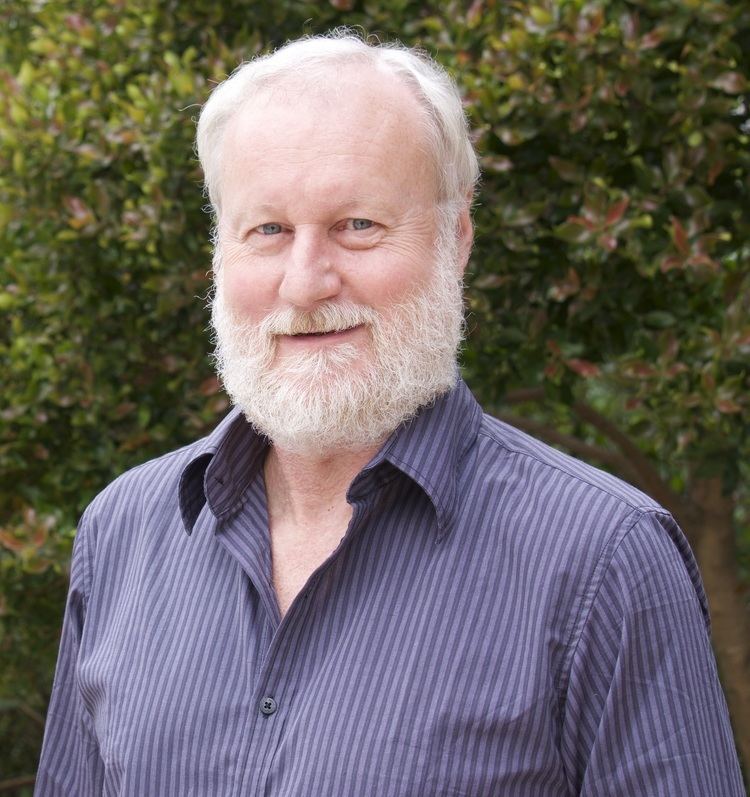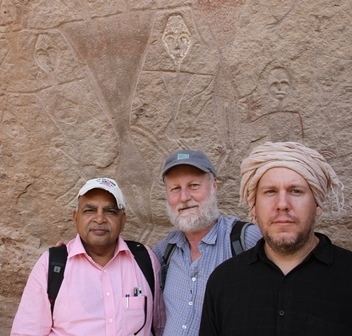Name Paul Tacon | ||
 | ||
Protect australia s spirit interview with prof paul tacon and jack thompson
Paul S.C. Taçon (born 1958) is an anthropologist and archaeologist who has spent over thirty years conducting field work in destinations ranging from Australia, Botswana, Cambodia, Canada, China, India, Malaysia, Myanmar, Thailand, South Africa and the United States. In 2011, he was appointed the first Chair in Rock Art research at Griffith University on the Gold Coast, Australia. Paul S.C. Taçon has made several key archaeological discoveries in Australia, most notably in western Arnhem Land (NT) and Wollemi National Park (NSW). These include the earliest rock art evidence of warfare in the world, the origins of the Rainbow Serpent, significant new Arnhem Land rock art sites, rock art discoveries in Wollemi National Park and the oldest rock paintings of Southeast Asian watercraft in Australia.
Contents
- Protect australia s spirit interview with prof paul tacon and jack thompson
- Red deer cave 14 000 year old thighbone interview with prof paul ta on on abc news at noon
- Career
- Place Evolution and Rock Art Heritage Unit
- Protect Australias Spirit campaign
- Selected Publications
- Awards and Academic Distinctions
- References
Red deer cave 14 000 year old thighbone interview with prof paul ta on on abc news at noon
Career

Paul S.C. Taçon received his MA in Anthropology from Trent University in 1984 and his PhD from the Australian National University in 1990. He was based at the Australian Museum in Sydney from 1991 to 2005, acting as a Principal Research Scientist in Anthropology from 1998 to 2005 and Head of the Museum's People and Place Research Centre from 1995 to 2003. In 2005, Paul S.C. Taçon joined Griffith University and has since led two ongoing research programs, "Picturing Change" and "Late Pleistocene Peopling of East Asia". He has pioneered the use of radiocarbon dating of beeswax rock art, and his research team was the first to use uranium-series direct dates for rock art in China. Currently, he is leading the use of innovative three-dimensional laser scanners to conserve vulnerable rock art sites.
Place, Evolution and Rock Art Heritage Unit
Paul S.C. Taçon recently established the Place, Evolution and Rock Art Heritage Unit (PERAHU) at Griffith University. This research unit is located within the School of Humanities and advocates multidisciplinary, multicultural and scientific approaches to rock art and cultural evolution research. He has close collaborations with the Rock Art Research Centre at the Australian National University and the Centre for Rock-Art Studies at the University of Western Australia. Together, these three research groups are the foremost authority on rock art research in Australia.
"Protect Australia’s Spirit” campaign
He recently launched the “Protect Australia’s Spirit” campaign in May 2011 with actor Jack Thompson. This campaign aims to create a fully resourced national archive to bring together information about rock art sites, as well as planning for future rock art management and conservation.
Selected Publications
- 1989. Taçon, P.S.C. Art and the essence of being: symbolic and economic aspects of fish among the peoples of western Arnhem Land, Australia. In H. Morphy ed., Animals into art, pp. 236–50. London: Unwin Hyman.
- 1991. Taçon, P.S.C. The power of stone: symbolic aspects of stone use and tool development in western Arnhem Land, Australia. Antiquity 65(247):192-207.
- 1994. Taçon, P.S.C. Socializing landscapes: the long term implications of signs, symbols and marks on the land. Archaeology in Oceania 29(3):117-29.
- 1994. Taçon, Paul S.C. and C. Chippindale. Australia’s ancient warriors: changing depictions of fighting in the rock art of Arnhem Land, N.T. (with comments from 10 leading authorities and reply). Cambridge Archaeological Journal 4(2):211-48. doi 10.1017/S0959774300001086
- 1996. Taçon, P.S.C., Wilson, M and Chippindale, C. Birth of the Rainbow Serpent in Arnhem Land rock art and oral history. Archaeology in Oceania 31(3):103-24.
- 1998. Chippindale, C. and Taçon, P.S.C., eds. The Archaeology of rock-art. Cambridge: Cambridge University Press, Cambridge (391 pgs.).
- 2002. Taçon, P.S.C. , Pardoe, C. Dogs Make Us Human. Nature Australia, Vol. 27(4), Australian Museum pp. 52–61
- 2010. Taçon, P.S.C., Li, G., Yang, D., May, S.K., Liu, H., Aubert, M., Ji, X., Curnoe, D. and A.I.R. Herries. Naturalism, nature and questions of style in Jinsha River rock art, northwest Yunnan, China. Cambridge Archaeological Journal 20(1):67-86.
- 2010. Taçon, P.S.C., May, S.K., Fallon, S.J., Travers, M., Wesley, D. and R. Lamilami. A minimum age for early depictions of Southeast Asian praus in the rock art of Arnhem Land, Northern Territory. Australian Archaeology 71:1-10.
- 2011. Mokhtar, S. and P.S.C. Taçon. The recent rock drawings of the Lenggong Valley, Perak, Malaysia. Antiquity 85 (328):459-475.
- 2011. Taçon, P.S.C. Special places and images on rock; 50,000 years of Indigenous engagement with Australian landscapes. In J. Anderson (ed.), Cambridge companion to Australian art, pp. 11–21. Cambridge University Press, Melbourne.
- 2012. Taçon, P.S.C., June Ross, Alistair Paterson, and Sally May. Picturing change and changing pictures: Contact period rock art in Australia. In J. McDonald and P. Veth, eds., A Companion to rock art. Oxford: Wiley-Blackwell, 2012. ISBN 978-1-4443-3424-1
Awards and Academic Distinctions
- Fellow of the Australian Academy of the Humanities, awarded 2010.
- Fellow of the Society of Antiquaries of London, awarded 2009.
- Honorary Professor, Yunnan Institute of Cultural Relics and Archaeology, Kunming, China, awarded 2008
- Kimberley Aboriginal Community award for contribution to knowledge of Aboriginal culture, awarded: 2002.
- Premier’s Public Sector Awards, Significant Improvement to Delivery, New South Wales Government (Premier’s Office), awarded: 1997
